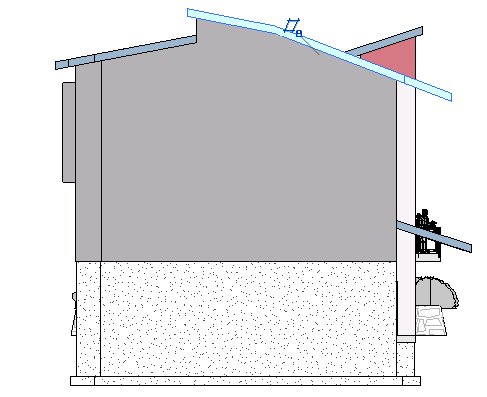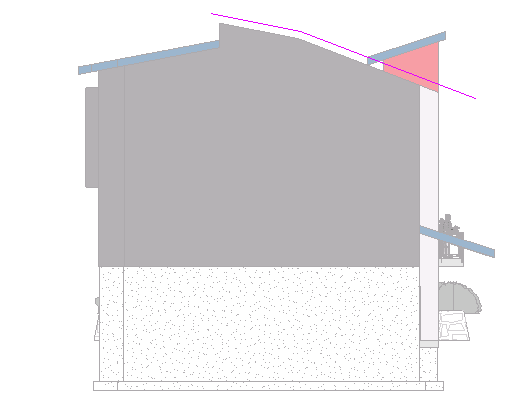Review key terms specific to the sketching process.
- Sketching is a process of drawing elements in Revit.
- Sketch-based elements are those elements (for example, floors, ceilings, and extrusions) that are typically created using sketch mode. There are also elements, such as walls, that are sketched but do not require the use of sketch mode.
- Sketch mode is an environment in Revit that allows you to sketch elements whose size or shape cannot be determined automatically, for example when you create (or edit a sketch of) a roof or a floor. When you enter sketch mode, the ribbon displays the tools needed for the type of sketch you are creating or editing.
- All the elements that comprise a sketch-based element (such as a roof) are known as the sketch.
For example, a sketch-based roof is selected in the following image.

In this example, when you select the roof (created by extrusion), you can click Modify | Roofs tab
 Mode panel
Mode panel
 (Edit Profile), which opens the sketch (the pink lines in the following image) in sketch mode. For a roof created by footprint, select the roof and click Modify | Roofs tab
(Edit Profile), which opens the sketch (the pink lines in the following image) in sketch mode. For a roof created by footprint, select the roof and click Modify | Roofs tab Mode panel
Mode panel
 (Edit Footprint). Here you can edit the individual elements of the sketch. The tools that are available in sketch mode vary depending on the type of element you are editing.
(Edit Footprint). Here you can edit the individual elements of the sketch. The tools that are available in sketch mode vary depending on the type of element you are editing. 